More and more schools are making student well-being a focal point of education, but doing so is a complex process—and our favorite education books this year confirm this.
Some of the best ones tackled student well-being at the individual level by offering practical strategies and methods for teaching mindfulness, social-emotional skills, and positive mindsets. Others approached well-being from a larger societal perspective, arguing that we should address difficult subjects with students head-on—such as race, gender identity, and climate—and broaden our definition of school achievement for girls, many of whom face horrifically unsafe conditions in their schools every day.
For schools and educators who have taken up the gauntlet to prioritize student well-being, we on the GGSC’s education team hope these books offer you some insight and practical strategies for this challenging but very rewarding journey.
Alphabreaths: The ABCs of Mindful Breathing, by Christopher Willard and Daniel Rechtschaffen, illustrated by Holly Clifton-Brown
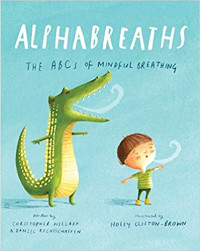 Sounds True, 2019, 32 pages
Sounds True, 2019, 32 pages
What if children were taught from a very young age about the power of their breath? How it can evoke challenging emotions like sadness, fear, and anger; but how it can also help us to calm down, feel joy, and connect to others? Imagine the agency this would give children to handle the difficult thoughts and emotions that are par for the course in this school of life, while also encouraging them to think of others in a kind and compassionate way.
This is exactly what authors and mindfulness experts Christopher Willard and Daniel Rechtschaffen have accomplished in their book Alphabreaths.
In the classic format of an alphabet book, the authors teach mindfulness practitioners ages four to eight how to use their breath to cultivate important skills, such as attention, gratitude, body awareness, and kindness. For example, Q for “Question Breath” teaches emotion awareness by having readers ask how they’re feeling as they breathe in and answer as they breathe out. H for “Hugging Breath” introduces children to self-compassion as they give themselves a hug while breathing. And my personal favorite, S for “Superhero Breath,” encourages kind and helpful action as readers imagine themselves as a superhero on the in-breath and imagine how they will help someone on the out-breath.
Even creative teachers of older students may find this book a powerful tool. For example, it could jumpstart student-driven research on how breathing affects well-being, or serve as a model for students to create their own alphabet books that teach mindfulness and other social-emotional skills to younger “buddy” students. Who knew breathing could be so imaginative—and fun?
How Girls Achieve, by Sally Nuamah
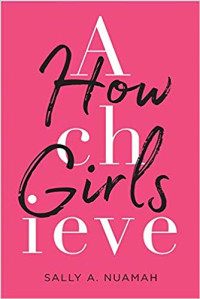 Harvard University Press, 2019, 216 pages
Harvard University Press, 2019, 216 pages
Please teach your daughters not to measure their strength by how much they can endure. —Sanusi
This quote frames the opening chapter of researcher Sally Nuamah’s book How Girls Achieve. After deeply investigating girls’ lives at schools in Ghana, South Africa, and the U.S., she invites educators and policymakers to consider an expanded definition of school “achievement”—“not only as a measure of academic performance but also as the absence of damage from experiences of learning.”
The statistics she shares are alarming. For example, 76 percent of girls in the U.S. (ages 14-19) report “feeling unsafe” as a girl at least once in a while. One in three girls in South Africa report being raped in or near schools (one-third of whom acknowledge sexual assaults by their teachers). And many girls in Ghana and South Africa also miss school every month simply because they lack basic resources—including access to sanitary napkins and flushing toilets.
When girls live in harmful school environments, promoting “grit” and “resilience” can actually be hurtful, says Nuamah. She encourages community support systems called “achievement nets” (one of which she leads herself) where people join together to support disadvantaged students on their learning journeys, financially and otherwise. Overall, she eschews dangerous “fix the girl” approaches and focuses on successful “feminist” school models throughout her book.
Limitless Mind: Learn, Lead, and Live Without Barriers, by Jo Boaler
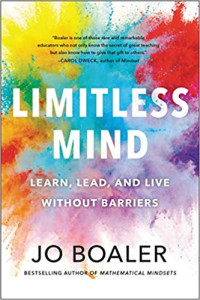 HarperOne, 2019, 256 pages. Read our review of Limitless Mind.
HarperOne, 2019, 256 pages. Read our review of Limitless Mind.
“I always felt like I was an island and I had to show up knowing,” says one of the 62 people interviewed by Stanford researcher Jo Boaler for Limitless Mind. In her book, Boaler debunks myths like this—and illuminates six key principles that may change the way you think about learning.
Sharing learners’ stories from six different countries, she draws on complementary research in psychology and neuroscience to emphasize that brains change everyday, that struggling and “not knowing” is a good thing, and that we learn better with the support of others.
Boaler identifies the ways school systems perpetuate a “fixed-brain” orientation (“I can’t learn this!”) by grouping, tracking, and labeling students, potentially resulting in damaging beliefs and lowered expectations that inhibit their learning. In fact, struggling doesn’t mean we have less potential in a certain subject—it can be a good sign. “The times when we are struggling and making mistakes are the best times for brain growth,” explains Boaler. When teachers focus on learning from and correcting errors in math, for example, students seem to benefit.
At the end of her book, she highlights several studies that remind us of the value of group support in learning—for example, one finding that students who studied for tests collaboratively ended up outperforming students who studied alone. In the classroom as in the rest of life, we need each other.
Mindfulness in the Secondary Classroom: A Guide for Teaching Adolescents, by Patricia Broderick
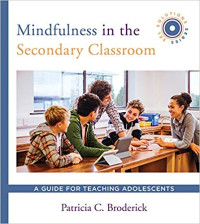 W. W. Norton & Company, 2019, 192 pages
W. W. Norton & Company, 2019, 192 pages
Researcher Patricia Broderick’s new book is a practical, easy-to-follow primer on the basics of mindfulness for middle and high school teachers and a wonderful companion to her Learning to BREATHE curriculum. The author argues that mindfulness isn’t a gimmick or quick fix, but “here and now attention with attitude”—a “find out for yourself” attitude of curiosity, openness, acceptance, and exploration. Each chapter features teaching vignettes, reflection questions, chapter takeaways, and formal practices—like observing your attention during common daily activities and taking a stress inventory, to start.
But some experiences are difficult to bring mindfulness to. “What happens when we really don’t want to be in this particular moment?” asks Broderick. Students (ages 10-18) report more negative emotions than younger children, while also struggling to sort through their emotions, so educators may particularly appreciate her strategies for navigating the “emotional underpinnings” of students’ day-to-day challenges (e.g., practices for “surfing the waves of the difficult” with students, along with ways to practice compassion for struggling students).
Mindfulness has much to offer students and schools, Broderick argues. She describes how a simple mindfulness practice can draw on foundational cognitive skills—working memory, flexible shifting of attention, and emotion regulation—as well as the ways it can feed student motivation, inquiry, and interest. You will also learn how mindfulness practices can encourage kindness, connection, hope, and purpose among students and school staff alike.
Permission to Feel: Unlocking the Power of Emotions to Help Our Kids, Ourselves, and Our Society Thrive, by Marc Brackett
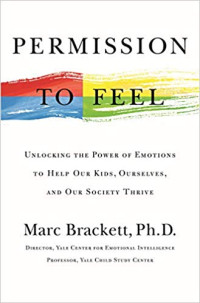 Celadon Books, 2019, 304 pages. Read our Q&A with Marc Brackett.
Celadon Books, 2019, 304 pages. Read our Q&A with Marc Brackett.
Despite the popularity of “emotional intelligence,” many of us struggle to genuinely answer basic questions like “How are you feeling?” says researcher Marc Brackett. In his new book Permission to Feel, Brackett, the founding director of the Yale Center for Emotional Intelligence, urges us to become more aware of our emotions and to learn strategies for managing them. Otherwise, they will overwhelm us: Today, about 70 percent of teachers feel “frustrated,” “overwhelmed,” and “stressed” at school, while a survey of 22,000 teens found that they most commonly report feeling “tired,” “stressed,” and “bored.”
Brackett’s own childhood struggle with bullying and mental health—and his emotionally healing relationship with his uncle—inspired him to study emotions. With 25 years of emotion research under his belt, he has developed RULER, a K-12 curriculum for understanding and navigating emotions.
Students in over 2,000 schools now practice RULER’s five key skills: recognizing their emotions and the emotions of others, understanding feelings and their sources (“What caused this?”), labeling emotions with precision, expressing feelings to inform others and invite understanding, and regulating (or navigating) emotions effectively. Research suggests that RULER can reduce students’ stress and burnout, enhance their academic achievement, and improve school climate.
Broadly speaking, Permission to Feel encourages us to become “emotional scientists,” understanding that all emotions are acceptable, all emotions are valuable sources of information, and everyone can learn to express emotions in ways that reflect who they are.
SEL Every Day: Integrating Social and Emotional Learning with Instruction in Secondary Classrooms, by Meena Srinivasan
 W. W. Norton & Company, 2019, 192 pages. Read an essay adapted from SEL Every Day.
W. W. Norton & Company, 2019, 192 pages. Read an essay adapted from SEL Every Day.
If you are an elementary school educator in search of a social-emotional learning (SEL) curriculum, you have an abundance of choice. Not so if you teach at the secondary level, where the gap in SEL materials is conspicuous.
As a former high school teacher and district-level SEL leader and trainer, Meena Srinivasan takes on the challenge of filling this gap through SEL Every Day—a highly readable guide that abounds in practical suggestions that educators can implement tomorrow.
In her deep empathy for the plight of high school teachers, who are experts in the subject they teach but not necessarily in their students’ social and emotional development, Srinivasan explains very clearly and simply why SEL is so imperative for adolescents. She then offers developmentally appropriate ways to weave SEL into the classroom without taking away from instruction time; rather, SEL becomes part of the air teachers and students breathe.
The book closes with a beautiful and courageous reminder that SEL is ultimately not about academic achievement, college entrance, or job skills: it’s about love, “the fabric of our lives.” And while SEL strategies may be beneficial, Srinivasan argues that “if the teachers employing these strategies aren’t coming from a place of love, then they will ultimately be futile.”
Teaching When the World Is on Fire, edited by Lisa Delpit
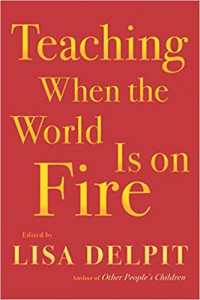 The New Press, 2019, 384 pages
The New Press, 2019, 384 pages
This is a profound time to be a teacher. During this period of massive societal upheaval, educators are caught in the middle of an intensely thorny process—the process of choosing and living by our values in the face of acute divisiveness. And the fear of not knowing how to navigate this process with students (or even with oneself) can be paralyzing.
Enter Lisa Delpit’s Teaching When the World Is on Fire—a collection of short essays written mainly by educators and school leaders on the front lines who are helping to guide students through complex topics such as race, police brutality, gender identity, climate, and culture. More than anything, these deeply moving and highly practical essays demonstrate that there is no way around this process except through it, and that all educators—even those with a great deal of experience—are struggling.
As high school dean Jamilah Pitts urges in her essay, just start the conversation. By admitting your fear, anger, confusion, pain, or discomfort, she writes, “students will understand these feelings and will appreciate your humility, compassion, and vulnerability.” When even starting the conversation or planning the lesson is too difficult, Pitts implores teachers to not say nothing. “Say exactly what you are feeling. That will mean more to your students than you may ever know.”






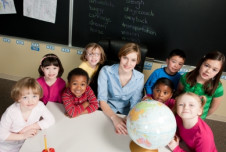
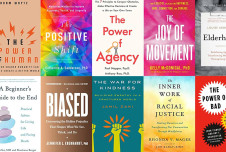
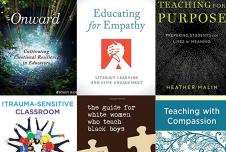
Comments